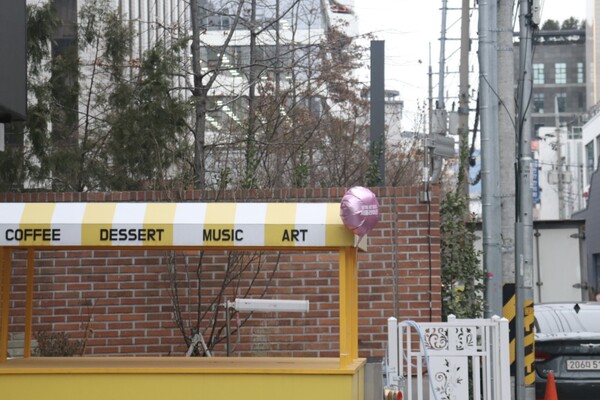
Among the generation MZ, pop-up stores are a major consumption trend. Due to the increasing demand, the number of pop-up stores has been on the rise. To the younger generation, pop-up stores act as a medium that connects the brand and the consumer through the experience of content in a space that contains its core values.
As such, pop-up stores promote brands to consumers in a short period of time and contribute to experience culture, but the real problem arises after they are closed. Unlike general offline stores that can be maintained for a long time, the contents of pop-up stores are discarded after a certain period. Considering that many pop-up stores consist of specific experience zones, the disposal rate of materials used is significantly higher. In addition, pop-up stores pursue new themes or concepts every time, which means a majority of materials cannot be reused or recycled. Large fiber-reinforced plastic and booths for pop-up stores are used for only one to two weeks during the event and then discarded.
Environmental groups also believe that there is too much waste once the pop-up event is over. It is estimated that a typical small pop-up store of more than 36㎡ generates about one ton of waste. A large pop-up store of more than 200㎡ will generate more than five tons of waste. Major department stores where pop-up events are commonly held have started recycling pop-up materials, but are failing to show actual results. Since the beginning of the pop-up industry, waste was not that a big problem. However, the scale of pop-ups has rapidly increased since then.
Of course, attempts are being made such as using recycled materials to solve the waste problem. For instance, some pop-ups are making efforts to minimize waste by minimizing interior elements. Another example of pop-up stores reducing waste is participating in urban regeneration programs and using props that could be used multiple times as banners and posters. One case of an urban regeneration program is from The Hyundai Department Store in Pangyo, which used tables and fixtures made from upcycled sponges, milk boxes, and wooden palettes at the “How to Re-Green” pop-up store.
While pop-up stores may offer excitement and new experiences to consumers, their hidden environmental costs paint a troubling picture. From excessive waste generation to unsustainable production practices, the dark side of pop-up stores reveals the significant impact on the environment. By re-evaluating the sustainability of pop-up store models and adopting more environmentally friendly alternatives, businesses can mitigate their environmental footprint and contribute to a healthier planet for future generations. In addition, consumers too should become aware of the issue surrounding pop-up stores, as there is a pressing need for the emerging pop-up industry to address these concerns.

